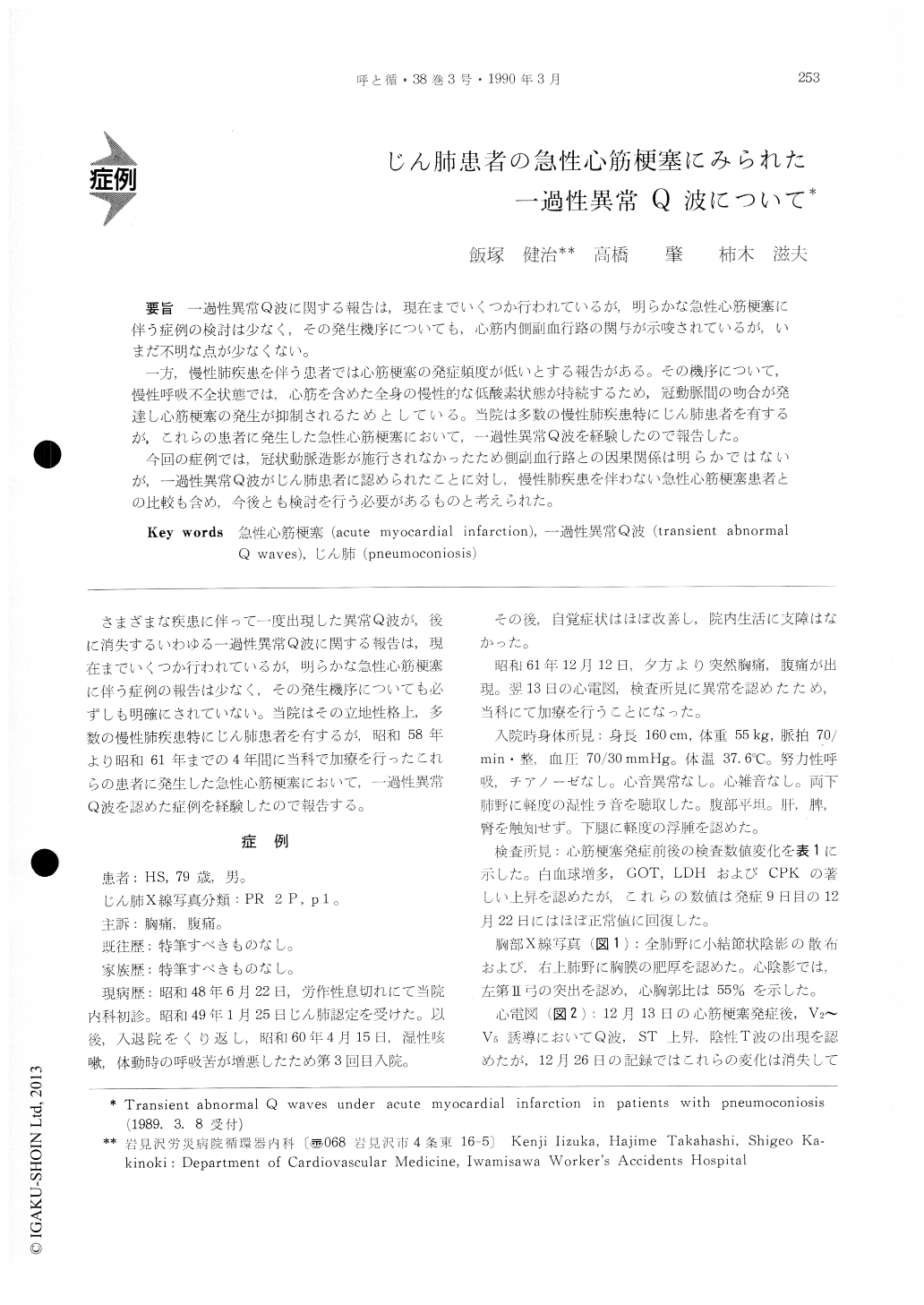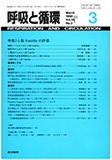Japanese
English
- 有料閲覧
- Abstract 文献概要
- 1ページ目 Look Inside
一過性異常Q波に関する報告は,現在までいくつか行われているが,明らかな急性心筋梗塞に伴う症例の検討は少なく,その発生機序についても,心筋内側副血行路の関与が示唆されているが,いまだ不明な点が少なくない。
一方,慢性肺疾患を伴う患者では心筋梗塞の発症頻度が低いとする報告がある。その機序について,慢性呼吸不全状態では,心筋を含めた全身の慢性的な低酸素状態が持続するため,冠動脈間の吻合が発達し心筋梗塞の発生が抑制されるためとしている。当院は多数の慢性肺疾患特にじん肺患者を有するが,これらの患者に発生した急性心筋梗寒において,一過性異常Q波を経験したので報告した。
今回の症例では,冠状動脈造影が施行されなかったため側副血行路との因果関係は明らかではないが,一過性異常Q波がじん肺患者に認められたことに対し,慢性肺疾患を伴わない急性心筋梗塞患者との比較も含め,今後とも検討を行う必要があるものと考えられた。
Abnormal Q waves have been generally consid-ered to be one of the most reliable indicators of per-manent myocardial cell death, namely myocardial infarction. Pathological and experimental studies also support this concept. However, some cases of abnormal Q waves disappearing after myocardial infarction have been reported.
Recently, we observed acute myocardial infarction with pneumoconiosis. In this case, a patient with abnormal Q waves appeared within 24 hours after the onset of acute myocardial infarction. But, thir-teen days later, these abnormal Q waves disappea-red on the surface twelve-lead ECG.
The precise mechanism for regression or disappear-ance of abnormal Q waves is not yet well known. Several studies pointed out a relation of this phe-nomenon to myocardial collateral circulation under ischemia. And, Nonkin et al reported that, patients with chronic lung disease such like pneumoconiosis, had high incidence of collateral circulation to the myocardium. This was due to chronic hypoxic conditions.
In our case, cineangiographic study could not be perfomed, but disappearence of abnormal Q wave (so called Transient abnormal Q waves), following acute myocardial infarction may be related to the presence of chronic lung disease.

Copyright © 1990, Igaku-Shoin Ltd. All rights reserved.


